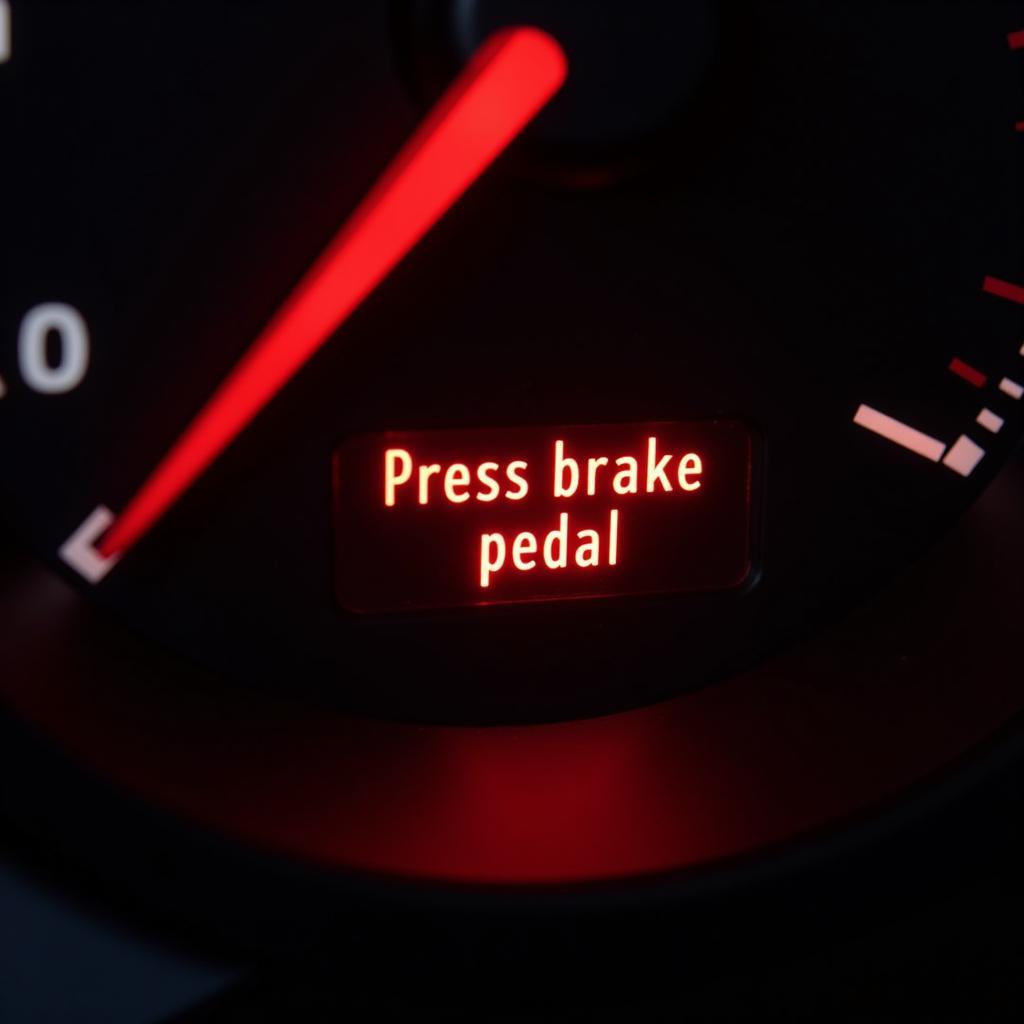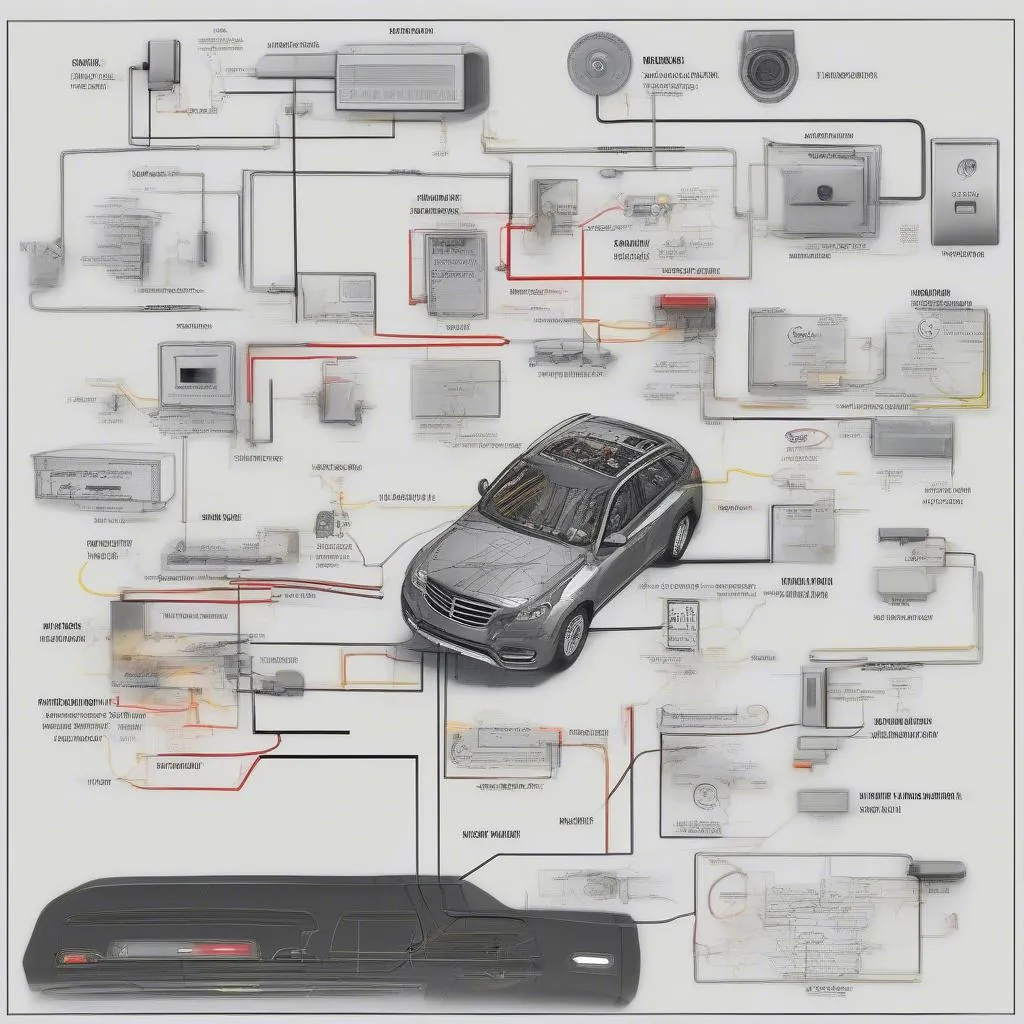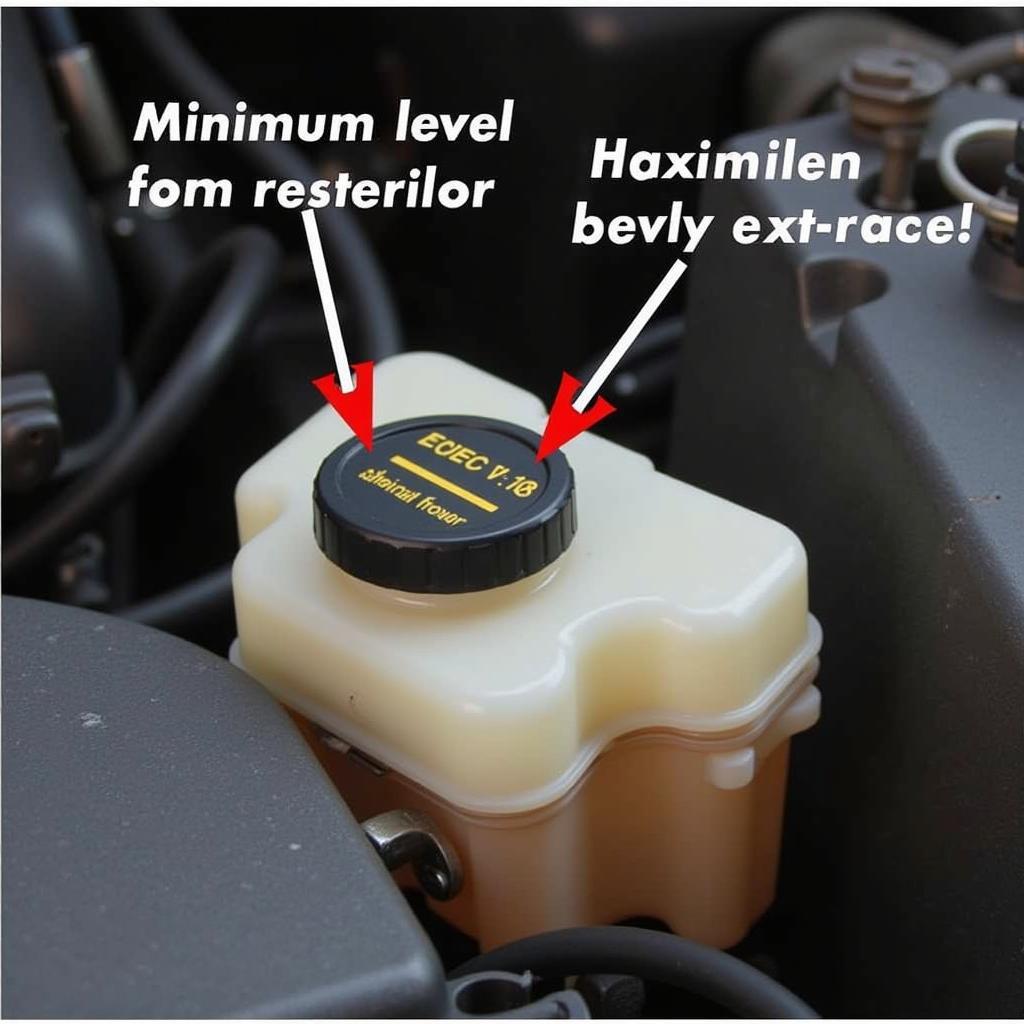A red “press brake pedal” warning light can be a jarring sight for any driver. This article delves into the causes, solutions, and preventive measures for this common issue, providing you with the knowledge to address it effectively. This warning light can signal various problems within your braking system, from simple fixes to more complex issues demanding professional attention.
If you’re seeing a red brake warning light, it’s crucial to understand what it means and take appropriate action. Ignoring it could compromise your safety and lead to more extensive and costly repairs down the road. This guide will cover everything you need to know, from basic troubleshooting to more advanced diagnostic techniques. Check our guide on BMW brake warning light for more information.
Understanding the Red Press Brake Pedal Warning Light
The red “press brake pedal” warning light isn’t just a suggestion—it’s a critical alert. It indicates a potential problem with your vehicle’s braking system, requiring immediate attention. While a yellow brake light often signifies worn brake pads, a red light usually points to a more serious issue.
Common Causes of the Red Warning Light
Several factors can trigger the red “press brake pedal” warning light. Here are some of the most common culprits:
- Low Brake Fluid: This is the most frequent cause. Low brake fluid can result from leaks in the brake lines, worn brake pads, or a faulty master cylinder.
- Faulty Brake Pedal Position Sensor: This sensor tells the car’s computer when the brake pedal is pressed. A malfunctioning sensor can trigger the warning light even if the braking system is functioning correctly.
- Issues with the ABS System: While not always directly related to the “press brake pedal” warning, problems with the Anti-lock Braking System (ABS) can sometimes trigger this light.
- Parking Brake Engaged: A simple yet often overlooked cause is a partially engaged parking brake. Ensure your parking brake is fully released.
- Electrical Issues: Wiring problems or a faulty brake light switch can sometimes cause the warning light to illuminate.
 Red Brake Pedal Warning Light on Dashboard
Red Brake Pedal Warning Light on Dashboard
Troubleshooting the Red Press Brake Pedal Warning Light
If the red “press brake pedal” warning light appears, follow these steps:
- Check the Parking Brake: Ensure the parking brake is fully disengaged.
- Inspect Brake Fluid Level: Locate the brake fluid reservoir and check the fluid level. If it’s low, add brake fluid that meets your vehicle’s specifications.
- Check for Leaks: Inspect the brake lines, calipers, and wheel cylinders for any signs of fluid leaks. Leaks can appear as wet spots or dripping fluid.
You may find information regarding brake fluid warning lights helpful, such as our guide on the Honda Civic brake fluid warning light.
When to Seek Professional Help
If the light remains on after checking the parking brake and brake fluid, or if you notice any leaks, it’s crucial to seek professional help. Continuing to drive with a red “press brake pedal” warning light is extremely dangerous.
Preventing Future Issues
Regular brake maintenance is key to preventing future problems. This includes:
- Regular Brake Inspections: Have your brakes inspected by a qualified mechanic at least once a year.
- Brake Fluid Flushes: Brake fluid should be flushed and replaced according to your vehicle’s maintenance schedule.
- Timely Brake Pad Replacement: Replacing worn brake pads prevents damage to the rotors and other brake components.
For specific issues relating to certain car models, we have guides such as the brake warning light on a 1999 Isuzu Trooper or the VW bus brake warning light wiring.
 Mechanic Inspecting Car Brakes
Mechanic Inspecting Car Brakes
Conclusion
The red “press brake pedal” warning light is a critical safety alert that should never be ignored. By understanding the potential causes and taking appropriate action, you can ensure your safety and prevent costly repairs. Regular maintenance and prompt attention to warning signs are crucial for maintaining a safe and reliable braking system. If you’re unsure about any aspect of your brake system, consult a qualified mechanic immediately. This warning light could indicate a serious issue with your Mercedes brake service warning, for example.
FAQ
- What is the difference between a red and yellow brake warning light? A red brake warning light indicates a serious problem requiring immediate attention, while a yellow light usually signifies worn brake pads.
- Can I drive with the red “press brake pedal” warning light on? No, it’s extremely dangerous to drive with this warning light illuminated. Seek professional help immediately.
- How often should I check my brake fluid level? It’s a good practice to check your brake fluid level at least once a month.
- What type of brake fluid should I use? Consult your vehicle’s owner’s manual for the recommended brake fluid type.
- How often should I have my brakes inspected? Have your brakes inspected by a qualified mechanic at least once a year or as recommended by your vehicle’s manufacturer.
- What are the signs of a brake fluid leak? Look for wet spots or dripping fluid around the brake lines, calipers, and wheel cylinders.
- Can a faulty brake light switch trigger the “press brake pedal” warning light? Yes, in some cases, a faulty brake light switch can cause this warning light to illuminate.


